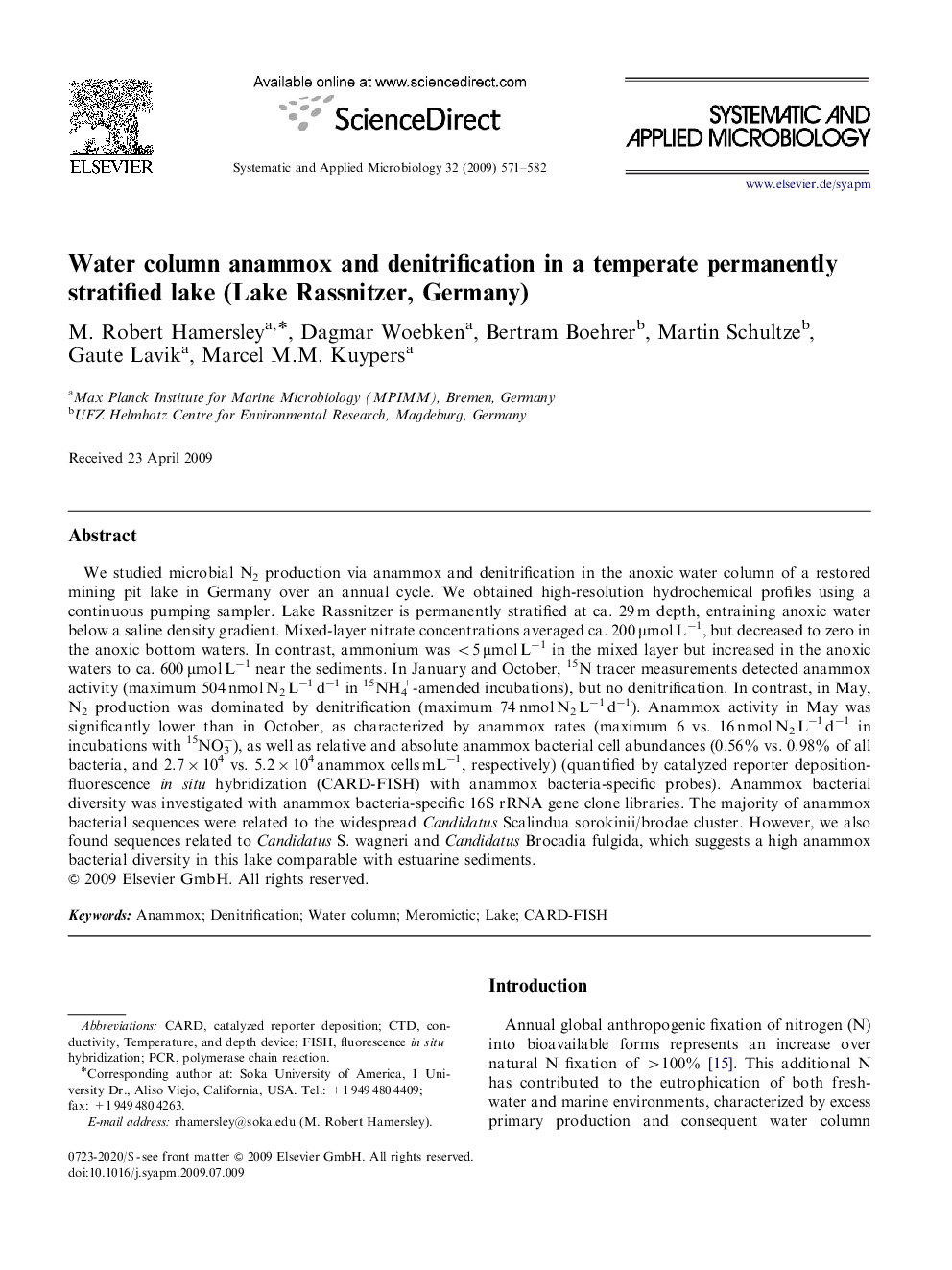| Article ID | Journal | Published Year | Pages | File Type |
|---|---|---|---|---|
| 2063903 | Systematic and Applied Microbiology | 2009 | 12 Pages |
We studied microbial N2 production via anammox and denitrification in the anoxic water column of a restored mining pit lake in Germany over an annual cycle. We obtained high-resolution hydrochemical profiles using a continuous pumping sampler. Lake Rassnitzer is permanently stratified at ca. 29 m depth, entraining anoxic water below a saline density gradient. Mixed-layer nitrate concentrations averaged ca. 200 μmol L−1, but decreased to zero in the anoxic bottom waters. In contrast, ammonium was <5 μmol L−1 in the mixed layer but increased in the anoxic waters to ca. 600 μmol L−1 near the sediments. In January and October, 15N tracer measurements detected anammox activity (maximum 504 nmol N2 L−1 d−1 in 15NH4+-amended incubations), but no denitrification. In contrast, in May, N2 production was dominated by denitrification (maximum 74 nmol N2 L−1 d−1). Anammox activity in May was significantly lower than in October, as characterized by anammox rates (maximum 6 vs. 16 nmol N2 L−1 d−1 in incubations with 15NO3−), as well as relative and absolute anammox bacterial cell abundances (0.56% vs. 0.98% of all bacteria, and 2.7×104 vs. 5.2×104 anammox cells mL−1, respectively) (quantified by catalyzed reporter deposition-fluorescence in situ hybridization (CARD-FISH) with anammox bacteria-specific probes). Anammox bacterial diversity was investigated with anammox bacteria-specific 16S rRNA gene clone libraries. The majority of anammox bacterial sequences were related to the widespread Candidatus Scalindua sorokinii/brodae cluster. However, we also found sequences related to Candidatus S. wagneri and Candidatus Brocadia fulgida, which suggests a high anammox bacterial diversity in this lake comparable with estuarine sediments.
